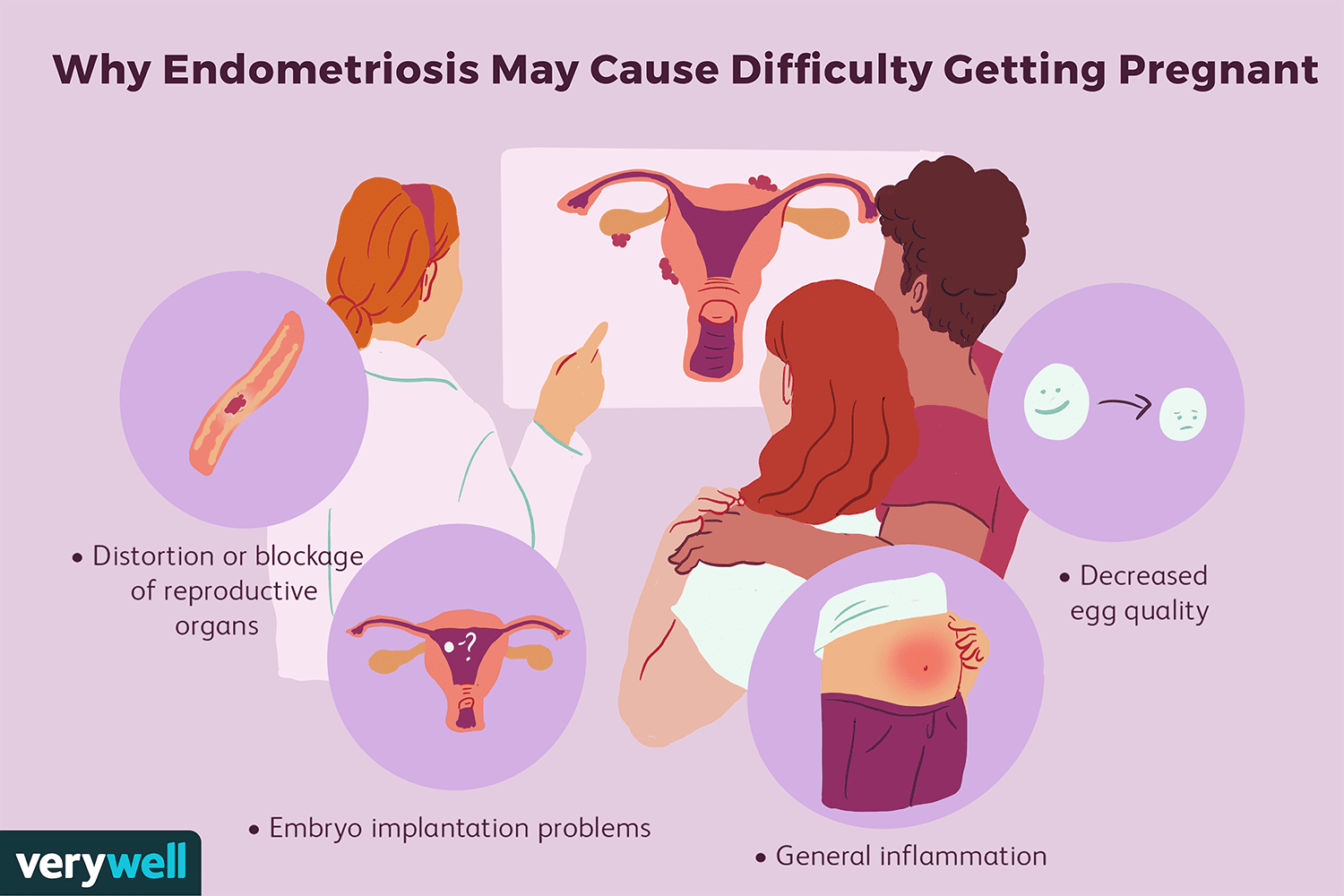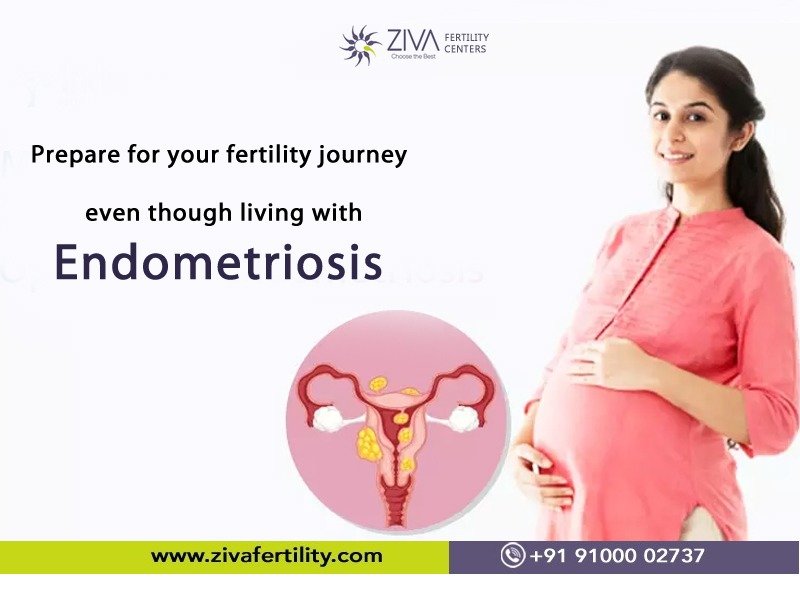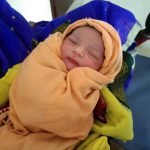Endometriosis is not easily discoverable, and most of the women discover it only after failing to conceive. As per research, it is reported that Endometriosis affects between 10–15% of the general population. In most infertile couples, Endometriosis is as high as 25–50%. So, it is natural to want to know what my Endometriosis journey will be if I want to get pregnant. How do I prepare for my fertility journey even though I’m living with Endometriosis?
Brief understanding of Endometriosis
Endometriosis is a condition where a tissue similar to the inner lining of the uterus grows outside the uterus. The most affected areas are the ovaries, fallopian tubes, and the tissue lining the pelvis. In some rare cases, Endometriosis extends beyond the pelvic area.
Endometriosis tissue is the lining inside the uterus, and that is the lining that thickens, breaks down, and bleeds in each menstrual cycle. But if it grows in places where it doesn’t belong, then it cannot leave the body and stays there. If the ovaries are affected, cysts called endometriomas may form. The surrounding tissue gets irritated, forming scar tissue. Adhesions that are bands of fibrous tissue may also develop. The pelvic tissues and organs stick to each other. Endometriosis causes pain during menstrual periods along with fertility problems. But there are surgical treatments or ART methods which help in parenting a child.

Impact of various stages of Endometriosis on your fertility or chances of conceiving
There are four main stages of endometriosis, as per the American Society of Reproductive Medicine (ASRM). ASRM has categorised these stages based on the following:
- Number of lesions
- Severity
- Depth
- Are other organs involved?
The three main subtypes of Endometriosis are:
- Superficial peritoneal lesions (SUP)
- Ovarian endometrioma (OMA)
- Deep infiltrative Endometriosis (DIE1 and DIE2).
Please know that having Endometriosis does not mean you are automatically infertile.
The endometriosis fertility index (EFI) accurately assesses a woman’s likelihood of conceiving after laparoscopic surgery if she has stage III or stage IV Endometriosis.
The EFI is a clinical tool used to counsel patients about the best approach when trying to conceive. There are anatomical and biological reasons, egg quality and amount, sexual issues, and hormonal/ovulatory problems due to which pregnancy with Endometriosis is so difficult.
Prepare for your fertility journey even though you are living with Endometriosis

Natural conception with Endometriosis
It is certainly possible, though successful pregnancy rates are lower than normal. Surgery to remove endometriosis deposits is one of the few methods to treat the condition, and it also improves your chances of conceiving. In a study conducted on 222 women 18 months post-surgery, approximately 30% had conceived, and after 36 months, about 50% conceived.
In case of reduced natural conception with Endometriosis, please consider an assisted reproductive technique (ART) earlier. Women without Endometriosis are advised to try natural conception for a year before speaking to a specialist. But for women with Endometriosis, please seek assistance after six months.
Seeking a professional’s help increases your chances of having a baby, but you can also gain empathetic, specialist support during what is usually a very difficult time.
ART helps to conceive with Endometriosis
Intrauterine insemination (IUI): IUI is where lab-prepared sperm is introduced straight into the uterus during ovulation. This saves the sperm from crossing many barriers to reach the egg for fertilisation. IUI is beneficial for women with mild Endometriosis and their male partner has a normal sperm count.
In-vitro fertilisation (IVF): In this most successful ART technique, an egg is fertilised with the sperm in a laboratory setting. The resultant healthy embryos are introduced to the womb. The milder the Endometriosis is, the better the chance of a live birth following IVF.
Surrogacy/Adoption:If the couple has tried ART and failed or if that process is too emotionally and financially stressful, there are options like surrogacy or adoption. One has to follow strict legal guidelines in these cases, but in India, we have a well-established legal infrastructure which can help you adopt or opt for surrogacy.
What to know while conceiving naturally with Endometriosis?
During pregnancy, because ovulation and menstruation are paused, the symptoms of Endometriosis improve. So, there will be no bleeding and no inflammation of the endometrial tissue outside the uterus.
So, for women with Endometriosis, you will have a few months or years of respite from your symptoms if you fall pregnant.
A woman who conceived naturally with Endometriosis may have the following symptoms:
Bowel perforation: The bowel wall develops a tear or hole due to the increase in abdominal pressure during pregnancy. This relatively rare condition is perfectly treatable when your doctor detects it early.
Uterine rupture: Surgical treatment of Endometriosis creates scar tissue, which alters the movement and stretches the womb’s muscle. These changes to the womb’s muscle can rupture the uterine wall before and during labour.
Miscarriage: Endometriosis has a higher chance of miscarriage across all types of the disease (minimal, mild, and severe).
Placenta previa: Placenta previa is where the placenta attaches incorrectly to the lower portion of the uterus, causing it to cover the cervix. The result is bleeding throughout pregnancy, and since it blocks the normal passage for a baby’s birth, it will require you to have a caesarean section.
As one can see, women with Endometriosis can definitely realise their dream of becoming parents. We at ZIVA fertility centre will discuss clearly your level of Endometriosis and what are your realistic chances of conceiving naturally. We also offer medical and counselling support to all our couples. For more information, please visit our website https://zivafertility.com/ or contact us at +91-9100002737 or +91-9392834024.
















